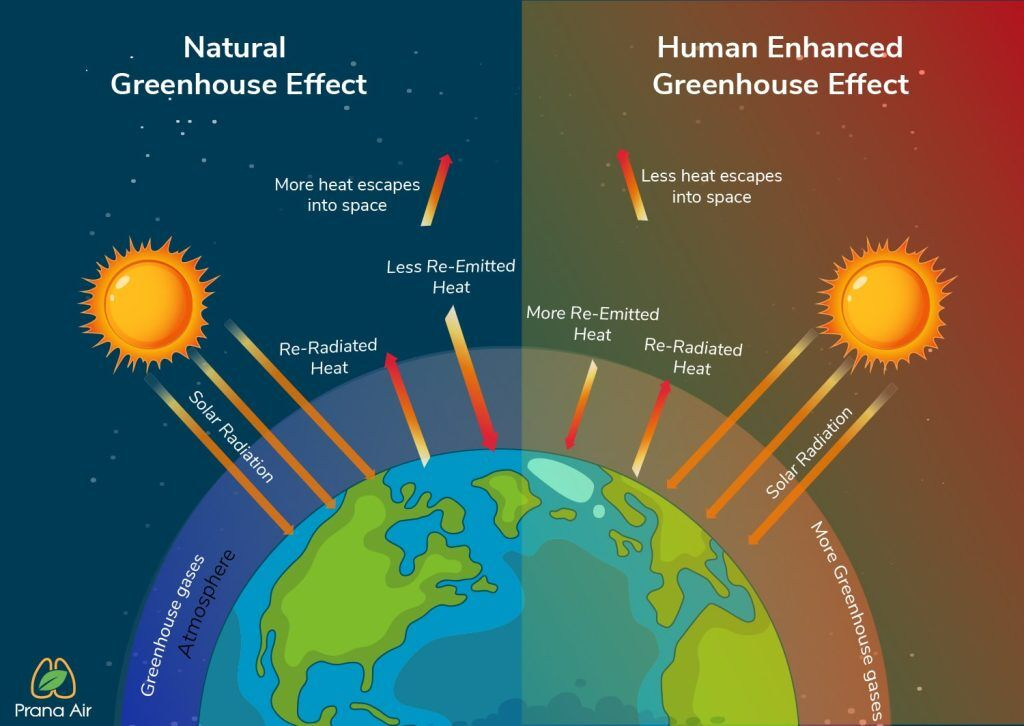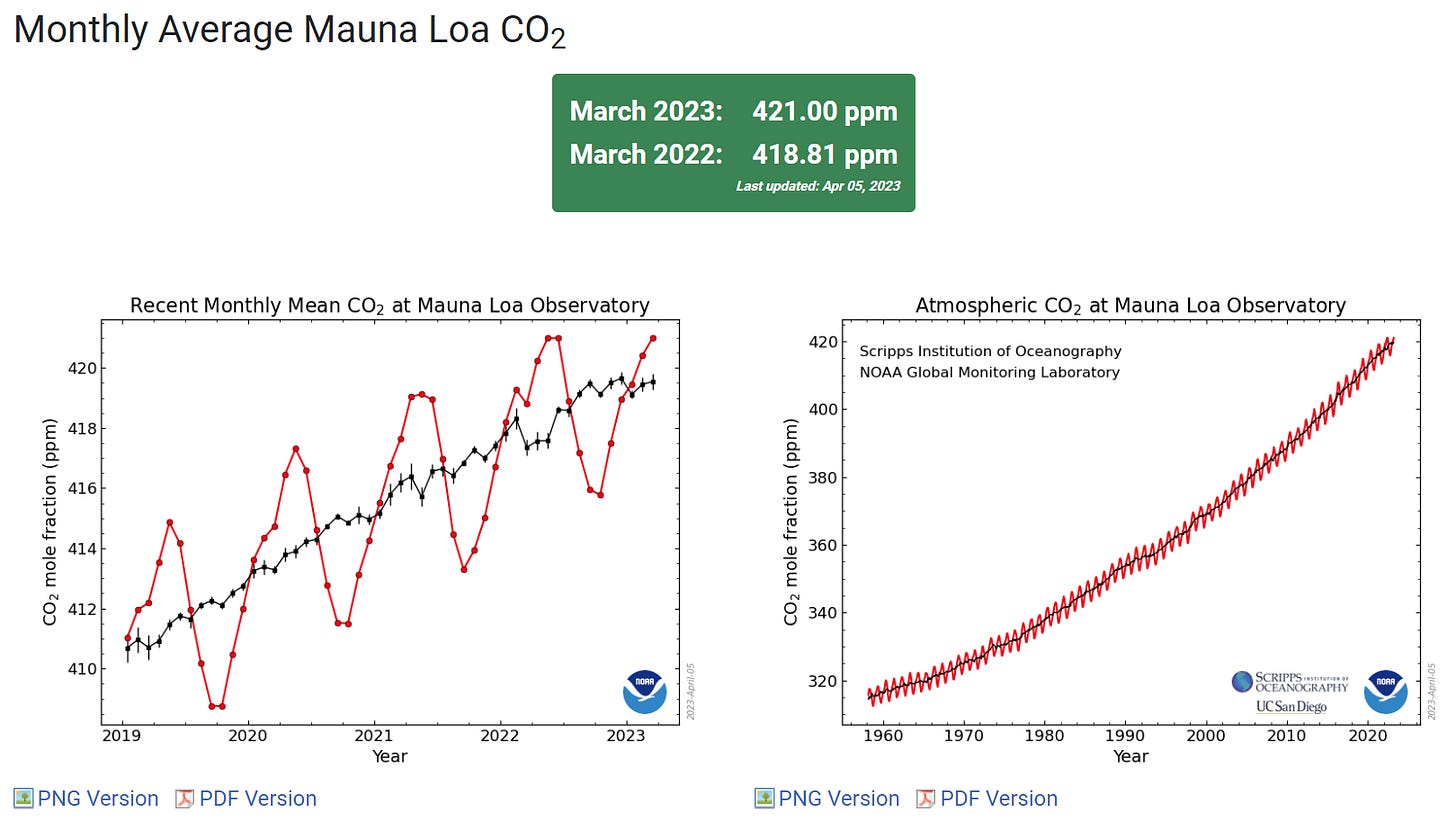Is it heat or CO2 that we should be worried about…
In the anthropogenic global warming (AGW) hypothesis excess heat is a consequence of the warming of the planet due to the accumulation of greenhouse gases, primarily CO2, in the atmosphere. Thus, addressing climate change requires reducing emissions of these gases and other greenhouse gases to reduce the energy imbalance and eventually bring down global temperatures. It is the increase in temperature that is claimed to be driving the effects of AGW such as drought, flood, extreme temperature, and increased frequency and intensity of storms.
Source: https://www.pranaair.com/blog/what-is-greenhouse-effect-its-gases-causes-solution/
Are current levels of CO2 bad for life on the planet?
Carbon dioxide (CO2) is an essential component of the Earth's atmosphere and is necessary for life on our planet. Without it, plants would not be able to perform photosynthesis, which is the process by which they convert sunlight into energy and release oxygen as a byproduct. Animals, including humans, depend on this oxygen for respiration.
Currently, CO2 is at approximately 423ppm as observed at the Moana Loa Observatory.
Source: https://gml.noaa.gov/ccgg/trends/
The optimal for plant growth is described here:
An increase in ambient CO2 to 800-1000 ppm can increase yield of C3 plants up to 40 to 100 percent and C4 plants by 10 to 25 percent while keeping other inputs at an optimum level. Plants show a positive response up to 700 to need of 1,800 parts per million, but higher levels of CO2 may cause plant damage (Figure 1).
Figure 1. Relation between CO2 concentration and rate of plant growth. Source: Roger H. Thayer, Eco Enterprises, hydrofarm.com. Redrawn by Vince Giannotti.
Source: https://extension.okstate.edu/fact-sheets/greenhouse-carbon-dioxide-supplementation.html
It’s been well documented that increased CO2 has led to a greening of the planet as observed by NASA, which states:
From a quarter to half of Earth’s vegetated lands has shown significant greening over the last 35 years largely due to rising levels of atmospheric carbon dioxide…
Source: https://www.nasa.gov/feature/goddard/2016/carbon-dioxide-fertilization-greening-earth
In fact, the most productive period for plant growth on Earth is believed to have been during the Carboniferous period, which occurred roughly 359 to 299 million years ago. During this time, the Earth's climate was warm and humid, and there were no polar ice caps. The combination of high temperatures, ample rainfall, and high levels of atmospheric CO2 (2-5x higher than today) made conditions ideal for plant growth.
During the Carboniferous, there were no humans or industrial activities that could have caused this increase in CO2. Instead, it is believed to have been caused by natural processes such as volcanic activity, weathering of rocks, and the movement of tectonic plates, which can cause changes in the balance of CO2 between the atmosphere and the oceans.
Thus, it’s not the CO2 we are really worried about it’s the excess heat that is trapped by that CO2.
Are there any changes in heat, related to wind and solar farms?
Recent studies in the peer-reviewed literature are highlighting the dramatic heating effects of both wind and solar farms. For example, a recent paper in the journal Nature Climate Change states:
Keep reading with a 7-day free trial
Subscribe to Irrational Fear to keep reading this post and get 7 days of free access to the full post archives.





